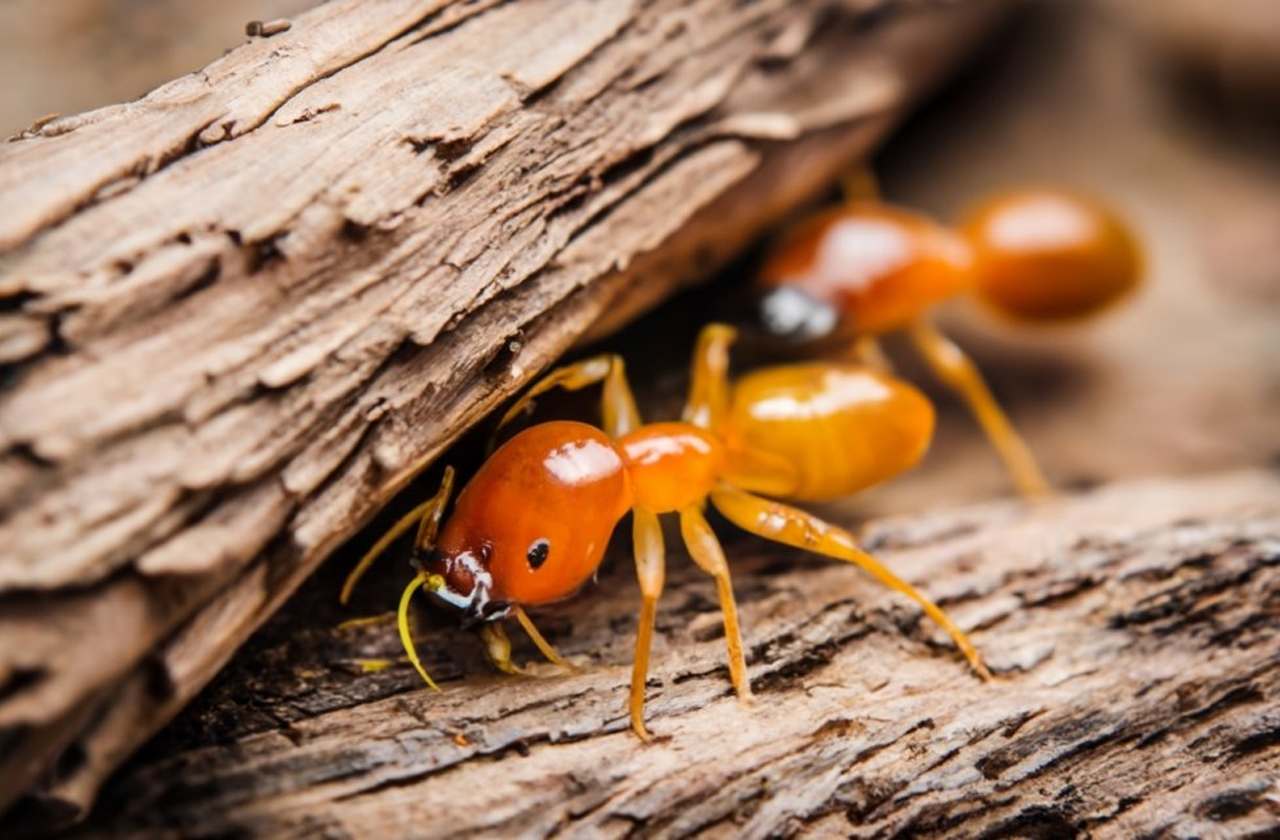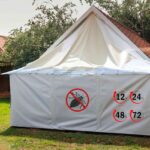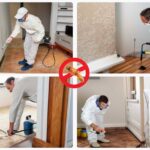The sight of tiny, wood-munching termites swarming your home can be enough to send shivers down anyone’s spine. These seemingly insignificant insects can cause extensive damage to your property, compromising its structural integrity and costing you thousands of dollars in repairs. But fear not, homeowner! This comprehensive guide delves into 10 effective termite control methods that actually work, empowering you to reclaim your home from these unwelcome guests.
1. Early Detection is Key: Identifying Termite Activity
Before diving into eradication tactics, early detection is crucial. Termites are notorious for their stealthy nature, often leaving little to no visible evidence of their presence until significant damage is done. However, certain telltale signs can alert you to a potential infestation:
- Mud tubes: These narrow, pencil-sized tunnels built from soil and saliva are a common giveaway, especially around foundations and exterior walls.
- Wood damage: Look for warped or sagging floors, hollow-sounding wood when tapped, and the presence of sawdust-like frass (termite droppings).
- Swarmers: Witnessing winged termites, often during spring or fall, is a clear indicator of an active infestation.
2. Chemical Warfare: Liquid Termiticides for Perimeter Defense
Liquid termiticides remain a mainstay in termite control. These powerful chemicals are put around your home’s foundation and exterior to keep termites out. Popular options include:
- Fipronil: A long-lasting and effective choice, offering residual protection for up to 8 years.
- Imidacloprid: Another long-term solution, known for its systemic action that spreads through the soil, targeting termites even deep underground.
- Chlorantraniliprole: A newer, environmentally friendly option offering effective termite control with minimal impact on non-target organisms.
3. Baiting the Trap: Targeted Termite Control with Bait Stations
Baiting stations offer a more targeted approach to termite control. These stations are strategically placed around your property, containing attractive bait that lures termites. Once inside, the bait laced with slow-acting pesticides contaminates the termites, ultimately killing them and disrupting colony communication. Popular baiting systems include:
- Sentricon: A leading brand offering discreet, in-ground stations that eliminate termites through a domino effect within the colony.
- Exterra: Another well-known option, Exterra bait stations feature above-ground and in-ground placements to cater to diverse termite species.
- Termidor Bait Matrix: This system utilizes a unique matrix design that allows for continuous monitoring and bait replenishment, ensuring effective termite control.
4. Fumigation: When All Else Fails, Gas Them Out
For severe infestations or when other methods prove ineffective, fumigation offers a drastic but effective solution. Fumigation involves sealing your entire home and introducing a potent gas, typically Vikane (sulfuryl fluoride), which eradicates all termite stages within the enclosed space. This method requires professional expertise and temporary relocation, but it offers comprehensive termite elimination.
5. DIY Solutions: Taking Control with Natural and Home-Made Remedies
While professional methods are recommended for extensive infestations, certain DIY options can be effective for smaller, localized problems. These natural and home-made remedies are often safer and more environmentally friendly:
- Diatomaceous Earth (DE): This fossilized algae powder acts like a microscopic blade, dehydrating and killing termites on contact. Apply DE around potential entry points and cracks.
- Boric Acid: This naturally occurring mineral disrupts the termite’s digestive system, leading to their death. Mix boric acid with water and spray it on infested areas or create bait stations with boric acid-laced wood.
- Neem Oil: Neem oil, which is extracted from the neem tree, has insecticidal qualities that both repel and destroy termites. Neem oil may be blended with water and sprayed over affected areas.
Summary of Termite Control Methods
| Method | Advantages | Disadvantages |
|---|---|---|
| Liquid Termiticides | Long-lasting protection, creates a barrier | Costly, potential environmental impact |
| Bait Stations | Targeted control, minimal disruption, effective colony elimination | Slower action, requires monitoring |
| Fumigation | Fast and effective for severe infestations | Costly, requires professional expertise, temporary relocation |
| DIY Solutions | Natural, eco-friendly, often affordable | Limited effectiveness for large infestations, may require reapplication |
6. Prevention is Key: Proactive Measures to Keep Termites at Bay
Being proactive is the greatest protection against termites. Put these precautions into practice to make the surroundings less inviting for these harmful insects:
- Moisture Control: Fix leaky pipes, eliminate excess moisture around foundations, and ensure proper ventilation in crawl spaces and basements to prevent termite-attracting dampness.
- Wood Elimination: Minimize wood-to-ground contact by maintaining a gap between soil and wood structures. Remove unnecessary wood debris from around your property, as it provides food and shelter for termites.
- Regular Inspections: Schedule annual termite inspections by a qualified pest control professional. Early detection can prevent significant damage and make treatment easier and more cost-effective.
- Seal Entry Points: Seal cracks and crevices in your foundation and exterior walls to limit potential termite entry points. Use caulking, weather stripping, or other appropriate materials to close any gaps.
- Maintain Landscaping: Avoid planting trees and shrubs too close to your home, as their roots can provide pathways for termites to reach structures. Keep mulch and other organic materials away from foundations to reduce termite attraction.
7. Professional Help: When to Call in the Experts
While DIY methods can be helpful for minor infestations, seeking professional assistance is crucial when:
- You suspect a large or active termite infestation.
- You are unsure about the type of termite present, as different species require specific treatment approaches.
- You are uncomfortable or lack the expertise to handle termite control yourself.
- You need a warranty or guarantee on the effectiveness of the treatment.
8. Understanding Costs: Budgeting for Termite Control
The cost of termite control varies depending on the chosen method, infestation severity, property size, and location. Here’s a rough estimate of average costs:
- Liquid Termiticides: $500-$1500 per application
- Bait Stations: $500-$1000 per installation
- Fumigation: $3000-$5000 per treatment
- DIY Solutions: $50-$100 for materials
Remember, investing in effective termite control is a worthwhile expense, preventing costly repairs and safeguarding the structural integrity of your home.
9. Environmentally Friendly Options: Going Green with Termite Control
For those concerned about the environmental impact of traditional methods, eco-friendly options are becoming increasingly popular. These methods often utilize natural ingredients and target termites selectively, minimizing harm to non-target organisms. Consider:
- Boric acid: As mentioned earlier, boric acid is a naturally occurring mineral that effectively disrupts termite digestion.
- Orange oil: Extracted from orange peels, orange oil acts as a repellent and can even kill termites on contact.
- Heat treatment: This method involves raising the temperature within a structure to lethal levels, effectively eliminating termites without the use of chemicals.
10. Knowledge is Power: Staying Informed for Effective Termite Control
Arming yourself with knowledge is crucial for making informed decisions regarding termite control. Here are some resources to help you stay up-to-date:
- National Pest Management Association (NPMA): https://npma.org/
- American Society of Home Inspectors (ASHI): https://www.ashi.org/
- Environmental Protection Agency (EPA): https://www.epa.gov/
By understanding the different termite control methods, their advantages and disadvantages, and the importance of proactive prevention, you can effectively combat these destructive insects and protect your valuable investment. Remember, early detection and prompt action are key to preventing significant damage and ensuring a termite-free home.
Conclusion
Living with the fear of termite infestation doesn’t have to be your reality. By implementing the strategies outlined in this guide, you can confidently take control of your home’s protection. Whether you choose professional intervention or opt for DIY solutions, remember to prioritize early detection, consistent prevention measures, and the responsible selection of effective control methods. With the right approach, you can reclaim your home from these silent invaders and enjoy peace of mind knowing your property is safe from their destructive jaws.
FAQ
Can I use home remedies to get rid of termites?
While professional help is always recommended for extensive infestations, small, localized termite problems can sometimes be tackled with home remedies. Options like boric acid, diatomaceous earth, and orange oil sprays can be effective deterrents, but remember:
- These methods often require repeated application and may not provide long-lasting control.
- They may not be suitable for all types of termites or for infestations that have already caused structural damage.
- Always handle these products with caution, especially if you have pets or young children.
Consider home remedies as a temporary solution or for very minor infestations. For anything more serious, consult a qualified pest control professional.
What are the signs of a termite infestation in furniture?
Termites that target furniture are typically drywood termites, so keep an eye out for these telltale signs:
- Unexplained cracks, warping, or hollow-sounding areas in wooden furniture.
- Fine sawdust-like frass (termite droppings) near furniture or around air vents.
- Winged termites swarming around windows or doors, especially during spring or fall.
- Tapping on wooden surfaces and hearing a hollow sound, indicating internal damage.
If you notice any of these signs, act quickly! Early detection and treatment can save your furniture from significant damage.
What can I do to prevent termites from returning after treatment?
Even after successful treatment, it’s crucial to remain vigilant and take preventative measures to discourage termite re-infestation:
- Address moisture issues around your home, as dampness attracts termites.
- Seal cracks and crevices around windows, doors, and foundation.
- Store firewood and other untreated wood materials away from your home.
- Maintain proper ventilation in crawl spaces and basements.
- Schedule regular termite inspections by a qualified professional for early detection and prompt action.
By adopting these preventative measures, you can significantly reduce the risk of future termite problems and safeguard your home’s long-term health.
- How do termite mounds help regulate temperature? - 7 January 2024
- 10 Effective Termite Control Methods That Actually Work - 4 January 2024
- How Long Does It Take for a Termite Mound to Form? - 21 December 2023




